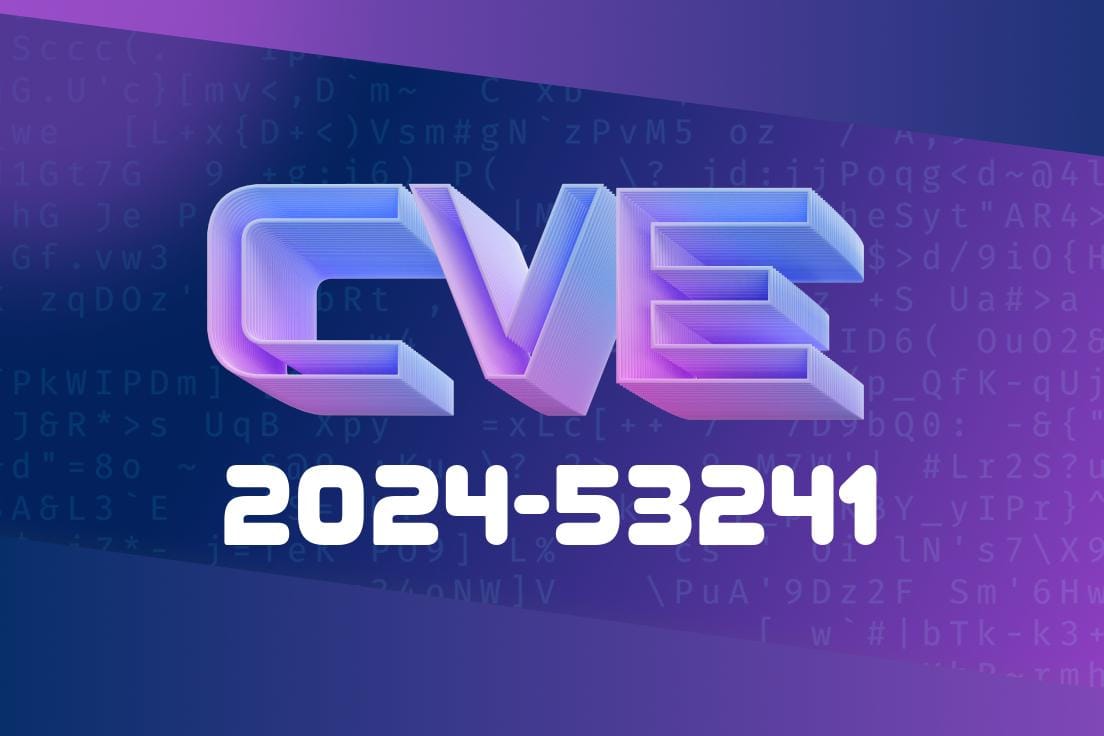Within the world of open-source operating systems, security vulnerabilities in the Linux kernel can have far-reaching impacts. Recently, CVE-2024-53241 was published, drawing attention from system administrators and developers alike, especially those using the Xen virtualization platform on x86 architectures. In this post, we'll break down what happened, how the issue was exploited, and how it was fixed, all in plain language. We'll also give you a look at the relevant code so you can see the change for yourself.
What Is CVE-2024-53241?
CVE-2024-53241 is a security vulnerability in the Linux kernel, specifically in its handling of paravirtualized (PV) iret hypercalls on x86 systems using Xen. To understand this vulnerability, let's first clarify a few terms:
- Xen: A popular open-source hypervisor (virtual machine monitor) used to run multiple virtual machines on a single physical host.
- Paravirtualization (PV): A virtualization technique where the guest operating system is aware of the hypervisor and can interact with it directly for improved efficiency.
- Hypercall: A call from the guest OS to the hypervisor, somewhat similar to a syscall in normal OS operation.
- iret: An instruction in x86 assembly to return from an interrupt handler; in paravirtualized environments, this may be replaced with a hypercall for security and virtualization purposes.
Historically, Linux on Xen would invoke certain hypercalls—like iret—by jumping into a 'hypercall page,' a special area of memory set up by the hypervisor. However, due to recent CPU security patches, like speculative execution mitigations, this approach has introduced subtle, hard-to-debug problems.
Background
When handling interrupts on a paravirtualized Xen guest, the kernel would issue a PV iret hypercall. Traditionally, this was done by jumping into a "hypercall page" supplied by Xen.
The Problem
Jumping to the hypercall page creates a security risk in specific scenarios, especially with speculative execution mitigations on modern CPUs. These mitigations often interact badly with such jumps, potentially leading to:
Reliability or stability issues due to improper handling by the CPU
In practice, attackers could theoretically trigger misbehavior in these scenarios, although details on practical exploitation are still emerging.
The Fix
Instead of using the hypercall page, the kernel maintainers decided to embed the hypercall instruction sequence directly in the kernel's own assembly code (xen-asm.S). This change both simplifies the hypercall path and avoids the pitfalls introduced by jumping to the hypercall page.
_Before (using the hypercall page):_
mov $HYPERCALL_PAGE, %eax
call *%eax # Jump to address on the hypercall page to run the iret hypercall
_After (directly invoking the sequence):_
mov $__HYPERVISOR_iret, %eax
mov %eax, %ebx
call xen_do_hypercall # Runs the iret hypercall directly from kernel assembly
Actual Commit Reference:
You can review the real patch in the Linux kernel repository
- Upstream commit fixing CVE-2024-53241
- Xen Project Security Advisory XSA-466
Who Is Affected?
- Any Linux system running as a paravirtualized (PV) Xen guest on the x86 (32-bit or 64-bit) architecture is potentially at risk.
- Bare-metal Linux installations, or those using different hypervisors/virtualization techniques, are not affected.
- Providers running large virtualized fleets (including cloud providers) should be particularly careful with updates.
Exploit Details
At this time, there are no public proofs-of-concept, but the theoretical risk involves speculative execution attacks (like Spectre or Meltdown relatives). Malicious guests might exploit the old hypercall page approach to extract data or undermine isolation between VMs.
In summary:
- The flaw allows for possible data leaks or instability due to the way speculative execution interacts with the hypercall page.
How To Fix
If you run Linux guests on Xen, update your kernels as soon as your distribution provides a patched version. Check with your Linux distro or cloud provider for CVE-2024-53241 or XSA-466.
Manual advanced users:
- If you compile your own kernel from source, make sure to include the patch mentioned in the references above.
References
- CVE-2024-53241 at MITRE
- Xen Security Advisory XSA-466
- Linux Kernel Patch: x86/xen: don't do PV iret hypercall through hypercall page
Final Thoughts
CVE-2024-53241 is a great example of how deep technical details—from CPU instruction flow and speculative execution, to virtualization internals—can combine to create subtle yet serious security issues. Fortunately, the fix is simple and now available. Make sure all your Xen guests running Linux are patched ASAP.
If you found this explanation helpful or have more questions about Linux, virtualization, or CVEs, feel free to comment or reach out!
Timeline
Published on: 12/24/2024 10:15:06 UTC
Last modified on: 11/03/2025 21:17:46 UTC
